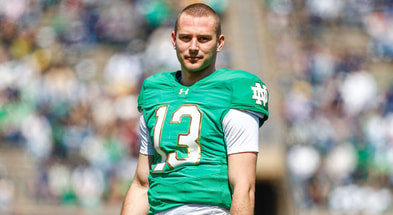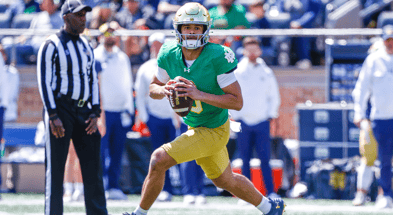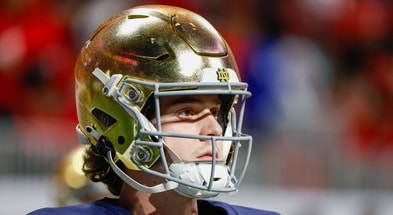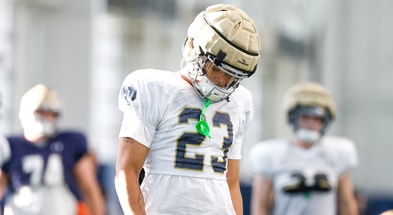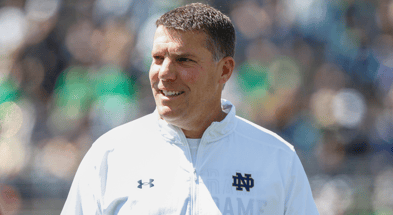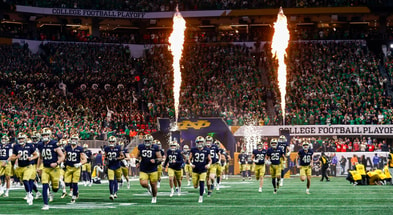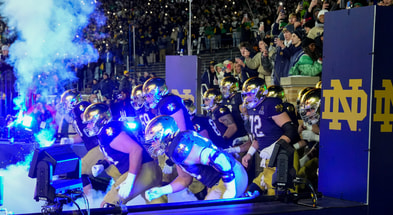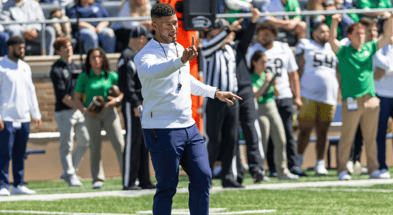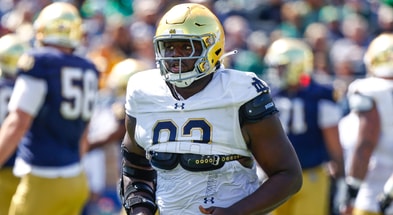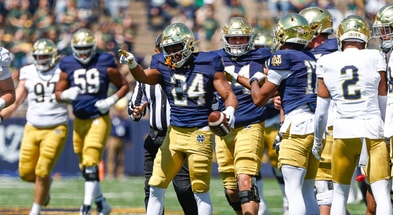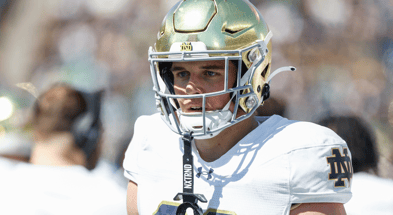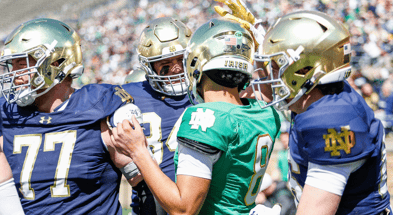Report: Notre Dame has had 'casual discussions' about joining the Big Ten 'for years'

On the surface, the groundswell of clamors for Notre Dame to join the Big Ten seem like a recent development. In reality, they may have started sprouting long before USC and UCLA created a seismic shift in collegiate athletics by announcing moves to the Big Ten last week.
According to a report from Laine Higgins of the Wall Street Journal, the two parties have been in talks for quite a while.
“The university has had casual discussions with leadership in the Big Ten for years about potentially joining the league, but no action had previously materialized, said a person familiar with Notre Dame,” Higgins wrote in a piece published Tuesday.
“The Big Ten would take them today, tomorrow, five years from now, ten years from now,” a conference commissioner told Higgins.
PROMOTION: Sign up for just $1 for your first year at Blue & Gold
Notre Dame is almost on the same exact parallel as the University of Iowa. South Bend has a latitude of 41.676° N. Iowa City is situated at 41.6611° N. Iowa is one of eight current Big Ten schools west of Notre Dame. There are six Big Ten schools to the east. Five Big Ten schools are north of Notre Dame. Nine are to the south.
The point? South Bend, Ind., is, always has been and always will be Big Ten country. It’s not unordinary to see a Notre Dame flag in front of one house and a Michigan flag in front of another next door. Or Purdue and Indiana. South Bend is well-represented. Notre Dame also has an extensive history of playing the likes of Michigan, Michigan State, Northwestern, Purdue and even Indiana. Its biggest current rival, USC, will soon be a part of the league too.
USC and UCLA, however, shattered the precedent of geography that until now was always a factor in conference realignment. Never before had two schools so far out of the footprint of a particular conference joined it. Colorado leaping from the Big 12 to the Pac-12 made sense. As did Nebraska going from the Big 12 to the Big Ten. Even Texas and Oklahoma heading to the SEC isn’t a head-scratcher. Nine of the current 14 teams in the SEC are in the Central time zone, like OU and UT.
The Trojans and Bruins are crossing three time zones to get to eight Big Ten locations.
All that to say this: What has made sense in the minds of so many isn’t of the utmost importance anymore. Money is. That’s why USC and UCLA called their shots. And Texas and Oklahoma, too, for that matter. So the question has become, will monetary motives be enough to force Notre Dame to do the same? It wouldn’t be shocking. If the conversations are indeed years old, they’ve been given a catalyst to intensify.
Top 10
- 1New
FSU Shooter
Police identify shooter
- 2Hot
Deion Sanders jab
CU coach blasts NCAA
- 3
Steve Angeli
ND QB enters portal
- 4
Lee Corso
Announces retirement
- 5Trending
Chad Baker-Mazara
Auburn star entering portal
Get the On3 Top 10 to your inbox every morning
By clicking "Subscribe to Newsletter", I agree to On3's Privacy Notice, Terms, and use of my personal information described therein.
“Should money continue flowing at unprecedented rates into the Big Ten and SEC, it may no longer make financial sense for Notre Dame to go it alone,” Higgins wrote. “Whether that threshold has been crossed, however, remains unclear.”
There are rumors the SEC will pursue Clemson, Miami and Florida State in a move that would completely cripple the ACC in the way the Big 12 and Pac-12 were with the departures of their marquee member institutions. What has been viewed as a sensible move for Notre Dame to join the league it has been a partial member of for nearly a decade no longer makes any sense at all. It’s simply not wise to join a dying enterprise.
Just remember: “Today, tomorrow, five years from now, 10 years from now.” The way collegiate athletics operate in this era, the first two options are more likely than the latter two — even if Notre Dame has been independent for all but one season in the entirety of its existence.
“Wherever they choose to go or stay, the Fighting Irish may be the only university in this wave of realignment that still controls its own destiny because of the strength of their brand,” Higgins wrote.

